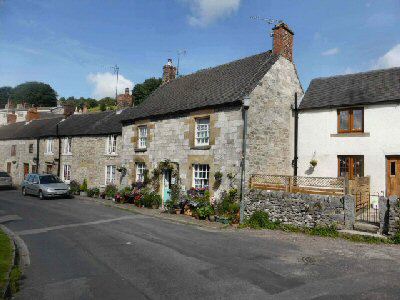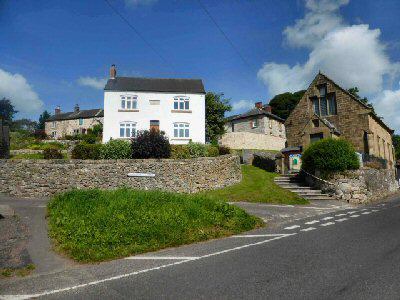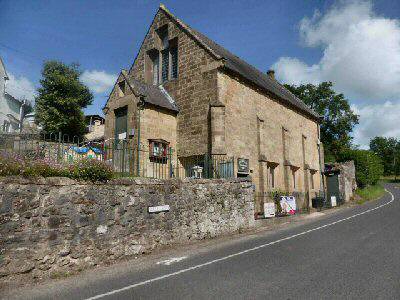BRASSINGTON
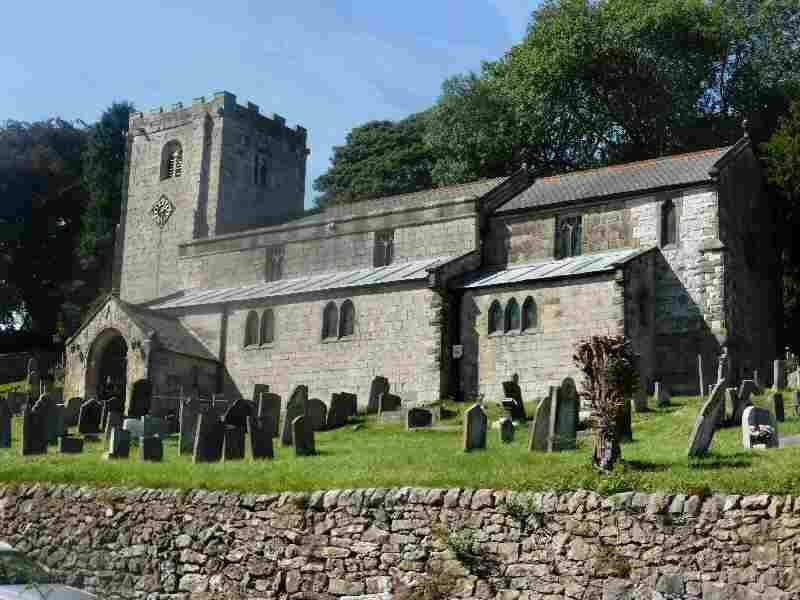
PLAN YOUR DAY OUT
Location: Brassington is between the B5056 Ashbourne to Bakewell Road and the B5035 Ashbourne to Wirksworth Road. Parking in the village is scarce, and there is a signed car park just to the north of the village along Wirksworth Dale (SK234547)
Visit: Visit St James’s Church and walk around the village; use the footpath by the church to visit Rainster Rocks, scheduled as an Ancient Monuments and Archaeological Area under the 1979 Act because of the wide range of diverse features that still survive, giving evidence of ancient agriculture and industrial usage of the site.
Refreshments: The Gate is an attractive pub for food and refreshments.
Walk: Carsington and Brassington Walk offers breathtaking views of the ancient villages of Carsington and Brassington, once the homes of very active lead mining communities.
Special Places of Interest in the Locality: The National Stone Centre off the High Peak Trail, north of Wirksworth, tells the story of stone and its geological and industrial history. Here you can find out how advanced technology uses stone in incredible ways and follow the trail that takes you back over three hundred million years. – Steeple Grange Light Railway, situated off the High Peak Trail, between Black Rocks and the National Stone Centre, provides scenic rides through an area of Special Scientific Interest. Check the website: www.steeplegrange.co.uk in advance for operating times. – Wirksworth with its narrow streets and maze of interesting alleyways, to admire the old buildings and lovely views, to visit the ancient church and its cathedral–like close.
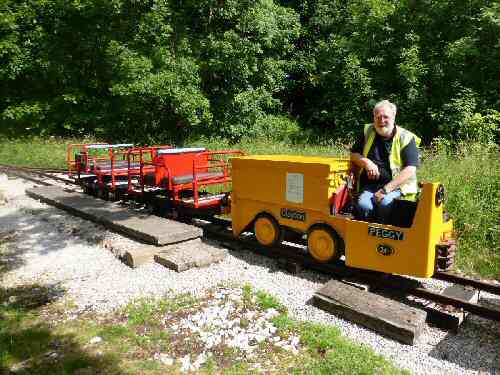
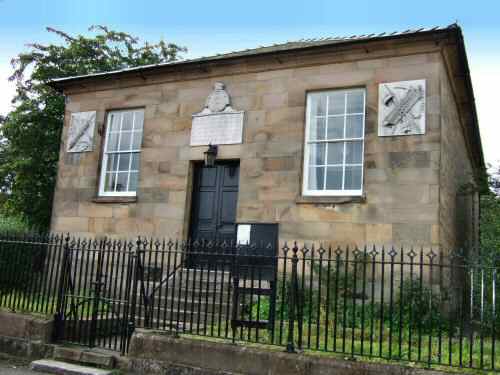
INTRODUCTION
Brassington is an attractive limestone village set on a hillside with winding streets in a remote corner of Derbyshire. The Norman Church, which stands high on the hillside, dominates the village. Many of the houses in the vicinity are over 300 years old. But recently, more homes have been built on the village’s southern edge.
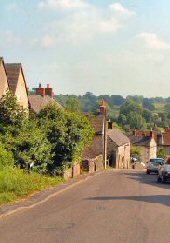
People lived in the area in prehistoric times, with remains of Bronze and Iron Age man found at Harborough Rocks. Also, a Roman road known as The Street once ran through the village. Nearby, many strange rock formations exist at Rainster Rocks and Hipley Hill. Little more than two miles away is Minning Low, where Neolithic chambered barrows were discovered on the summit. All this makes the countryside around Brassington of considerable interest to the geologist and the botanist.
LEAD MINING
Brassington prospered when lead mining was at its height. The rough ground to the east, west, and north and the hillocks and hollows of hundreds of abandoned mines remain as reminders of that era. It stood on the main London to Manchester Road, and there were 14 public houses in the village at the time, serving both travellers and thirsty lead miners. In 1738, the route was turnpiked as far as Brassington. The remainder of the road northwards over the well-drained limestone uplands was sufficient for wheeled traffic.
Unfortunately, Brassington’s days as an important staging post ended as new, less arduous routes north opened up. Lead mining also gradually ended, although barytes and caulk were still mined in the 20th century. The Golconda was the last mine to close in 1953.
THE BIG FREEZE
During the big freeze of 1947, the village was cut off entirely for six weeks without electricity or telephone. All the roads were impassable, and with food in short supply, two men with horses managed to cross the fields to the bakery at Hognaston. They returned several hours later with 200 loaves loaded on each horse.
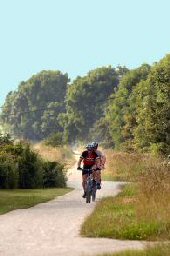
PUBLIC HOUSES
Built in 1616, The Gate was on the turnpike road and kept busy by-passing coaches, providing horse stabling and refreshments for coachmen. It is thought that Bonnie Prince Charlie’s soldiers were billeted there in 1745, and some of the oak beams came from ships of the Spanish Armada. The Inn is supposed to have been the haunt of highwaymen when coaches to Manchester passed through the village, the hilly countryside affording good cover for the robbers. On the opposite side of the road was the last tollhouse before the limestone uplands.
The only other public house in the village in recent years was the Miners’ Arms, which closed in 2024 after running into financial difficulties. During the lead mining era, it held a Barmote Court where mining disputes were settled. Ore theft was considered a grave offence, and Edward Manlove, a steward at the Barmote Court in Wirksworth, recorded the law.
Following the acquisition of a mine, the miner’s first requirement was to erect a stow(e) or windlass to signify ownership. This wooden structure was placed over the lead mine shaft to enable the ore to be hoisted to the surface.
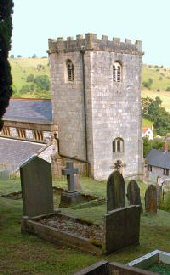
ST JAMES’S CHURCH
The oldest building in Brassington is St James’s Church, which dates back to the Normans. However, a carved figure on a stone inside the clock chamber indicates that worship may have been carried out here in Saxon times or earlier.
There are some interesting gravestones in the churchyard, one of which bears the inscription:
‘Remember this as you pass by – As you are now, so once was I.
As I am now, so you will be – Therefore, prepare to follow me.’
THE VILLAGE
The Tudor House, built in 1615, is probably the oldest in the village. It only got its name when it came into private ownership, when ‘Tudor’ was added. The initials shown at the front are those of Thomas Westerne and his wife, who had the house built. Later, it became a public house and remained open for over 150 years. From 1820 to 1848, the building fulfilled the role of housing paupers for the Ashbourne Poor Law Union, with seventy-seven names recorded at one stage. The men worked in the quarry at the rear of the house, breaking stone into specific sizes.
The three village chapels are now closed; the former Congregational Chapel on the northern side of Brassington is now the village hall. The British Legion recently provided a new meeting place in the centre of the village.
As part of the Millennium Project, an exhibition of memorabilia and old photographs took place in the village in July 2000; another Millennium Project created a small rest area with a seat behind the bus stop opposite the church.
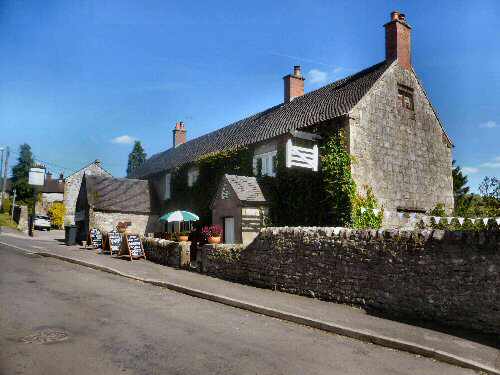
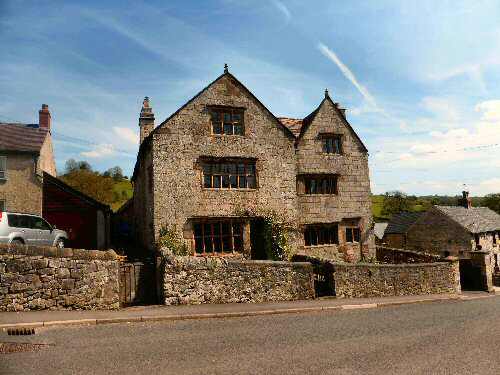
TEN FASCINATING FACTS ABOUT BRASSINGTON
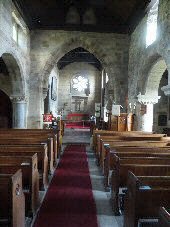
1. Brassington is 800 feet above sea level and known to the locals as `Brass’n`. It was once a thriving centre at the heart of lead mining country, but most of its working-age inhabitants now travel further afield to work.
2. Although many people with the surname Brassington have visited the village. Research a few years ago showed no one of that name had been known to live there since 1725!
3. The village green was restored as part of the Village Plan, where an old water pump adds character.
4. A pinfold for retaining stray animals once stood on the quaintly named street, Maddock Lake. Exactly how the street got its name is uncertain.
5. Brassington Hall is on the north side of Well Street and was originally a chapel in the 17th century.
6. According to the Independent, The Gate Inn was named the Best Unspoilt Pub in the country in the Good Pub Guide 2017 and one of the best 13 pubs in the country.
7. Longcliffe, on the dry limestone moorlands above Brassington, was a vital watering point when the Cromford and High Peak Railway operated.
8. Today, it is the home of Longcliffe Calcium Carbonates, the UK’s leading independent supplier of high-purity calcium carbonate and limestone powders, granules and aggregates. The county was first quarried in Roman times for building stone and lime, and it is still the UK’s largest lime and limestone producer.
9. The Limestone Way long-distance footpath passes close to the village.
10. Harborough Rocks are easy to access from the High Peak Trail, where you can visit the site of the cave once occupied by humans. People lived in the area in prehistoric times, and remains of Bronze—and Iron Age men have been found.
BRASSINGTON WALK
CARSINGTON AND BRASSINGTON WALK
